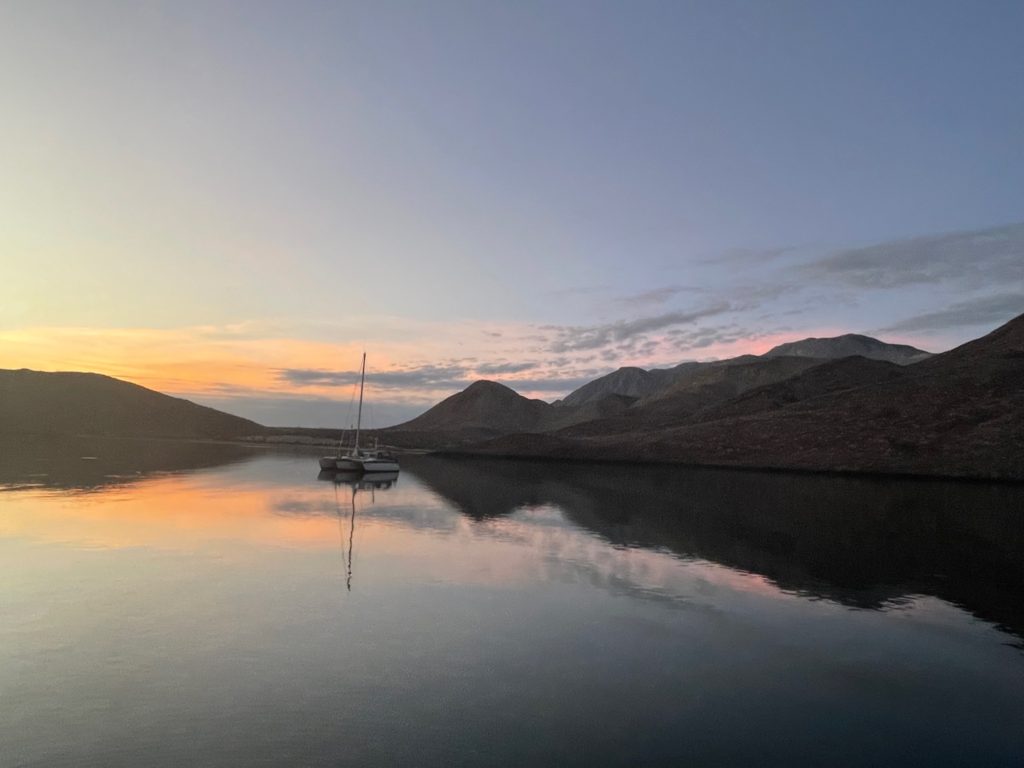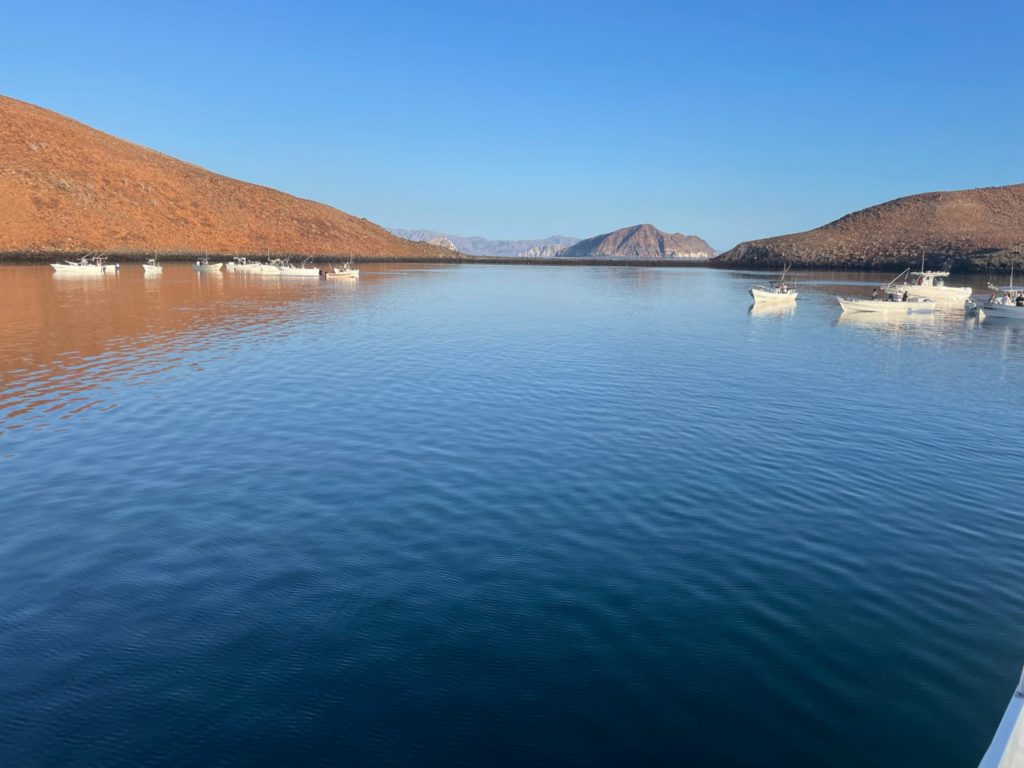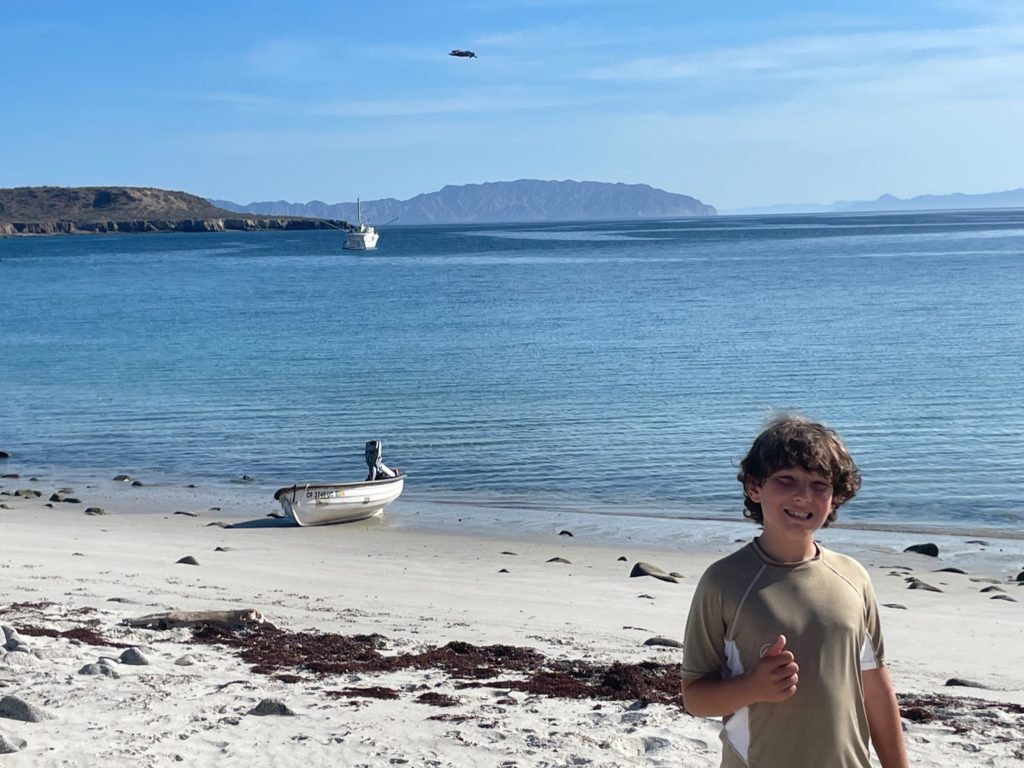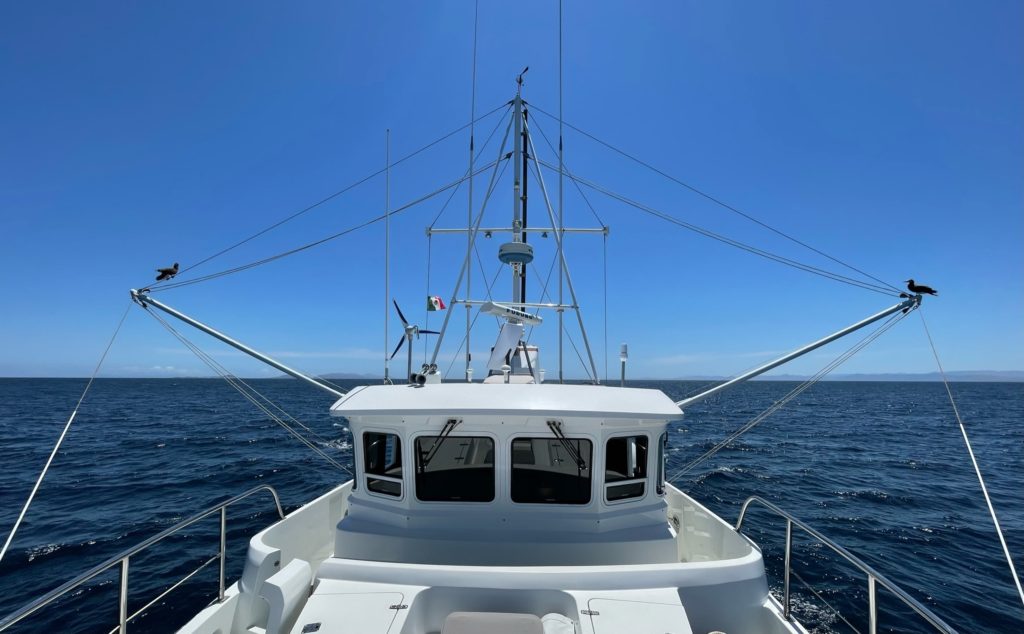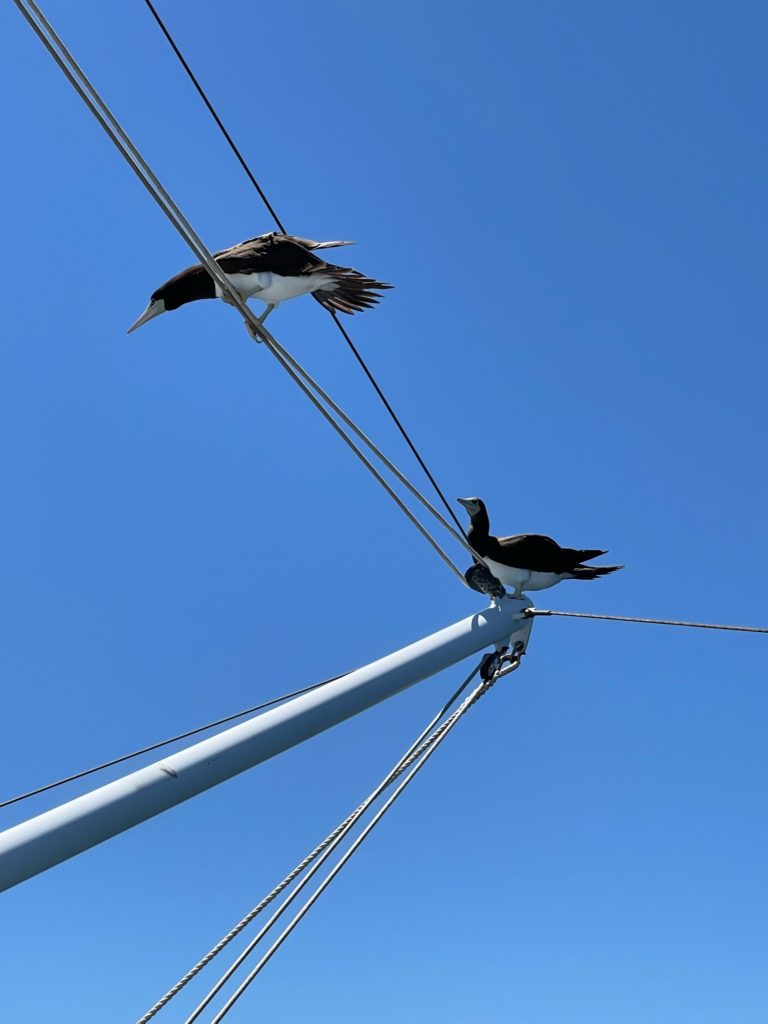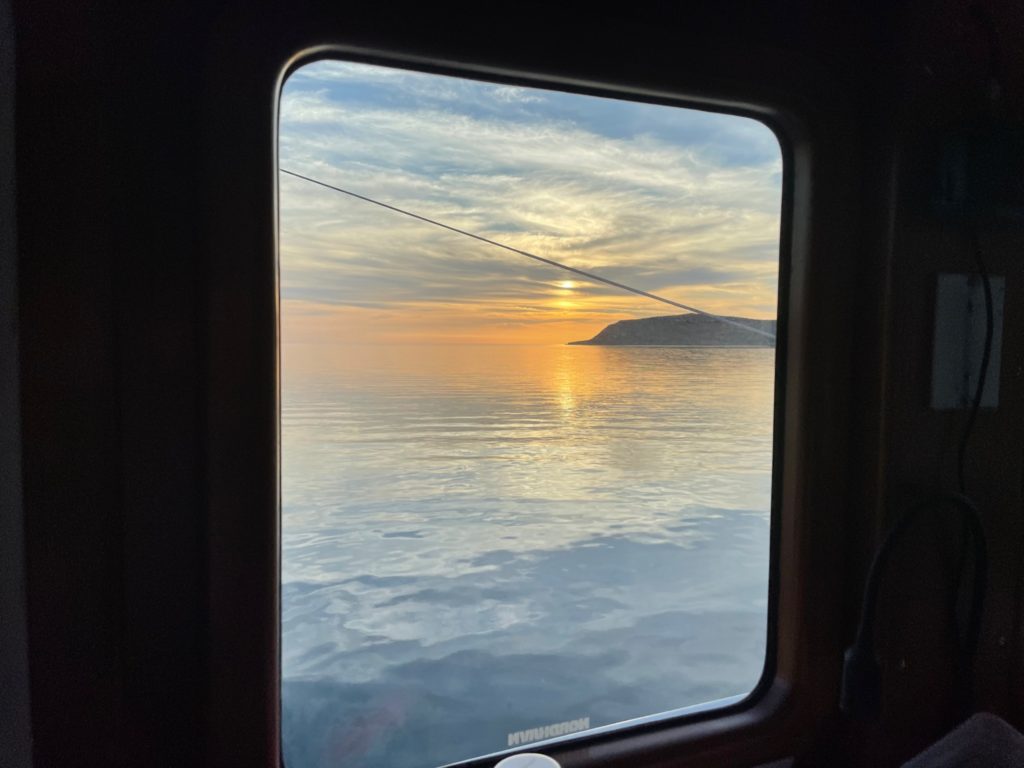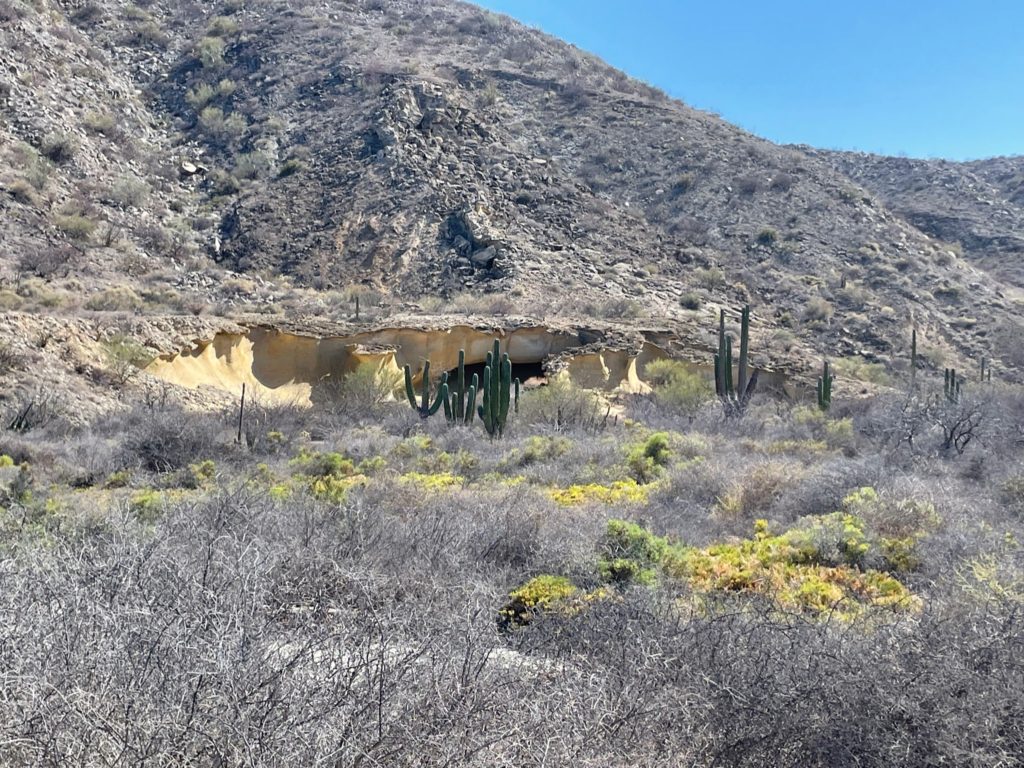Thursday, September 1 — One of our neighbors in the anchorage at Don Juan was throwing herself a birthday party this evening, and she had invited us to attend. The party was taking place in a different anchorage, called La Mona, which was about an hour ride away.
On Thursday morning, we got up early and hustled through our chores. Thursday was also Keith’s first day of school, so he did his schoolwork while Eric and Christi did chores.
One of Eric’s chores was to remove one of the alternator belts. When Eric had changed the alternator belts in Puerto Escondido, he used the same size belt made by two different manufacturers. Even though the belts were supposed to be the same, they were slightly different and it was causing a vibration. Eric figured that removing one of the belts would solve this (the alternator can run with only one belt).
Once chores/schoolwork were done, we got Kosmos ready to go to sea. We pulled up anchor at around 0915. We were the last boat to leave Don Juan. In transit, we passed “the window.” After enjoying the view through “the window” for several days from inside the anchorage, It was fun to see the view from the outside looking in.

La Mona was a lovely beach on the east side of Southern Bahia de Los Angeles, protected by large hills and jutting rock formations to the north. The beach was lined with homes. Some of the homes were nice, some were mobile homes.
Continue reading
